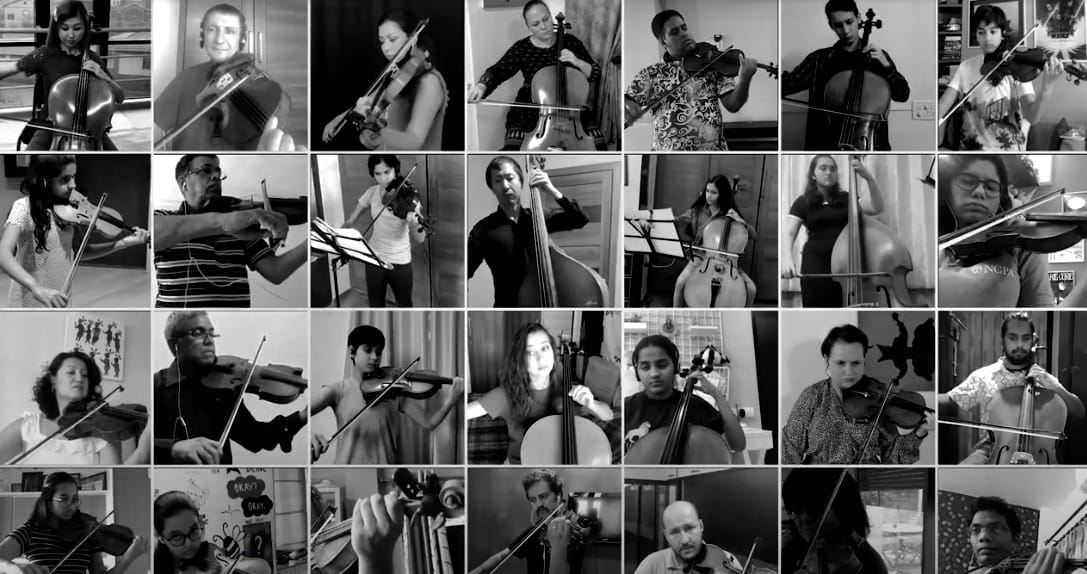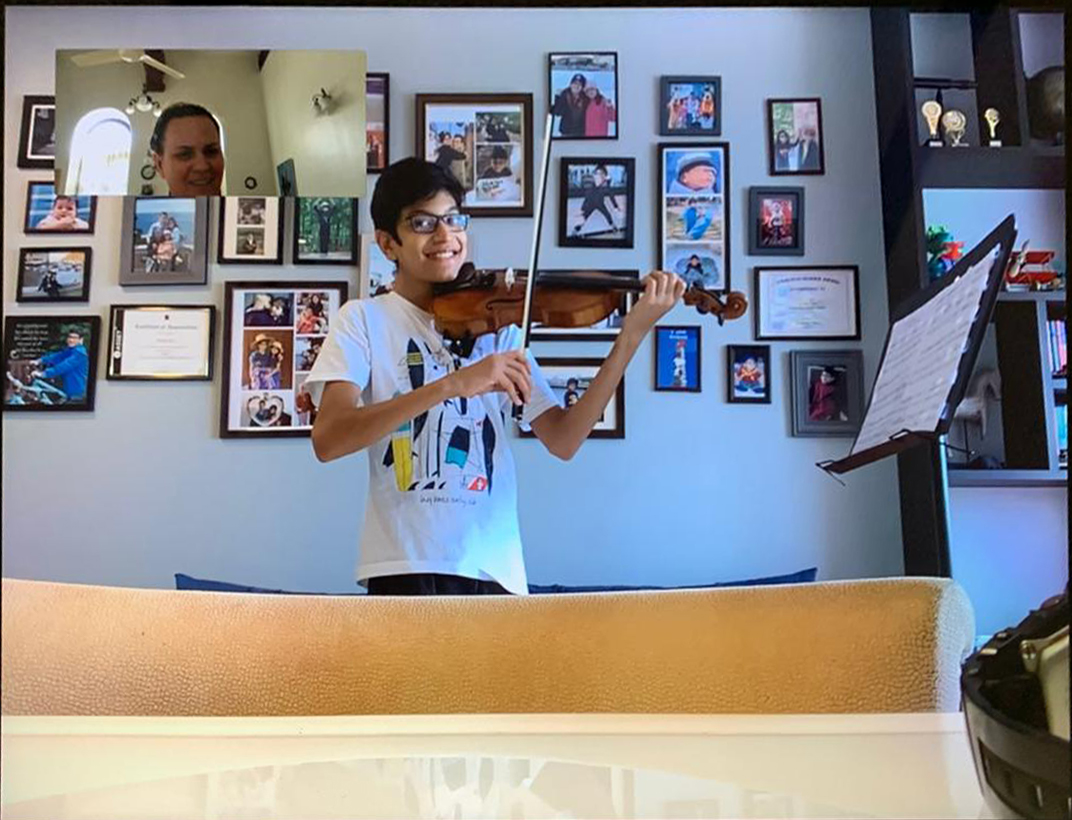The Learning Never Stops

In the absence of classroom lessons, the SOI Music Academy shifts gears and switches to online teaching, bringing together musicians and students under one virtual roof.
“I cannot remember having seen such unusually prolonged, testing times for so many countries, including India, where I work, and France, where I have my family,” says SOI Music Director Marat Bisengaliev about the changed world we have found ourselves in. But as we adapt to new ways of being, life finally seems to be moving on in areas it possibly can. It certainly is at the Symphony Orchestra of India, where work towards future programming and making the most of online resources is underway. In music education, a key area of the orchestra’s work, the temporary suspension of classroom teaching has evolved into a virtual learning space, where teachers have created a system of imparting daily lessons to students of the SOI Music Academy. “If anything, the number and duration of lessons have only increased,” says Bisengaliev.
Possibilities of the web
The online classes are conducted for individuals as well as groups. “The lessons of the student’s specialty are given in the usual one-on-one mode, but the approach depends on the teacher and student. Solfeggio is a group lesson, for which the teacher engages with students through the Zoom app in real time,” explains SOI cellist and faculty member at the academy, Margarita Gapparova. She adds that the iPad is useful as a keyboard for gauging the student’s intonation, and for tracking the text of what he/she is playing. For younger students, she sometimes records videos of their works on the instrument after a lesson, explaining which part of the bow must be used to play what kind of notes, with which fingers, etc. The orchestra’s violinist and teacher Gulzara Shakir points out another use of online lessons. “They are helpful in working with students who need regular monitoring,” she says. Yulia Gallyamova, SOI cellist and teacher, is also using the time to follow up on lessons previously given to students. Group theory lessons and topics like the history of music have lent themselves easily to the online modes of teaching, even as the teachers have been sharing listening and reading lists with students. “Now is a unique opportunity to listen to music and visit great museums and theatres online,” says Shakir.
A part of the lessons at the academy is training for concerts, which has now given way to preparation for recordings. Recently, musicians of the SOI came together for their first online project from the confines of their home, overcoming the challenges of distance, time difference and varying Internet speeds to play Air by Karl Jenkins, now available on the orchestra’s social media pages. Bisengaliev speaks further about the technological hurdles. “The quality of the software available nowadays is really good compared to what it was only five years ago. However, the problem is that smartphones and tablets automatically compress the sound and most annoyingly, compensate for the sound which means the dynamics of playing suffer as the software is designed for speech. So, the pianissimo or fortissimo does not reflect on those gadgets realistically as they compensate them to mezzo piano or mezzo forte. As a result, the dynamic band is artificially very narrow although it still gives a good idea of the intonation and rhythm.”
Some apps address this problem, one of which is now being used by the SOI and the academy. “You will be able to judge the sound on the newly released online recording of the second movement of the Palladio, which is a joint effort of the SOI and academy students,” Bisengaliev informs. The SOI is also exploring possibilities of conducting music appreciation workshops online.
Technology, a supplement
With several musicians from across the world making up the orchestra and the academy, the virtual teaching methods and aids employed during this period could prove helpful in the event that a teacher or a student moves cities, Gapparova believes, but is quick to add that nothing can replace a live lesson. “I think that online teaching will mainly remain a supplement. There are elements of physical teaching like correcting the posture or position of hands that cannot be transferred in a virtual environment,” Gallyamova agrees. Shakir is sure that despite all the enhanced interactivity, students miss the academy and rehearsals. “Some teachers may not have modern gadgets, but they have experience and the desire to seek excellence. Our principle is to work on the result, in any way possible. Of course, the presence of gadgets and WiFi greatly facilitates the lessons, but their lack does not affect them too much.”

Bisengaliev echoes the views of the teachers when he says there is no substitute for the tactile aspect of learning, orchestra sessions and chamber music. He, however, is positive that the interactive element will stay even when classroom teaching resumes, especially with the theory lessons. “I’m sure that this quarantine will kick-start the development of several interesting and efficient online programmes and applications,” he says, “and we should be a part of this development.”
This piece was originally published by the National Centre for the Performing Arts, Mumbai, in the May 2020 issue of ON Stage – their monthly arts magazine.





